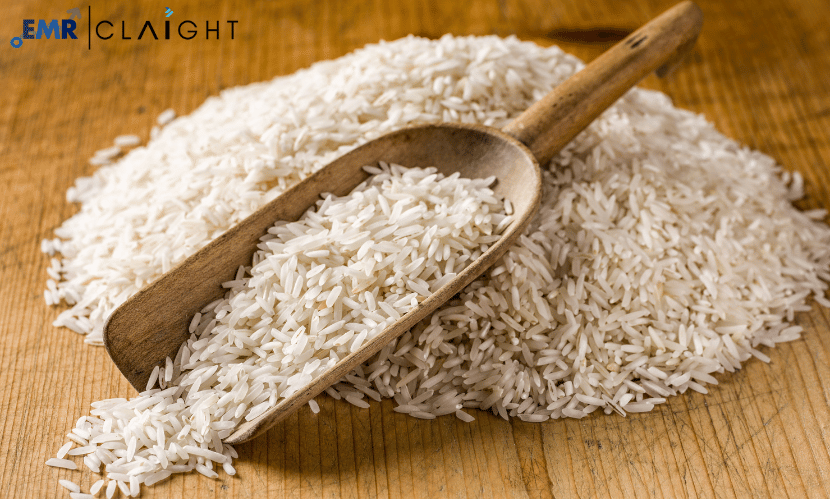Rice Market Analysis 2024-2032: Trends, Growth, and Forecasts
Rice is one of the world’s most significant food crops, serving as a staple diet for more than half of the global population. From the verdant paddy fields of Asia to the mechanised farms of the United States, rice production has been a cornerstone of agricultural economies. Beyond its role as a dietary mainstay, rice underpins livelihoods, trade, and cultural traditions. In 2023, the global rice market reached a value of approximately USD 323.70 billion. Projections indicate steady growth at a compound annual growth rate (CAGR) of 3.1% between 2024 and 2032, with the market anticipated to reach around USD 425.23 billion by 2032.
This article delves into the key trends, driving forces, challenges, and opportunities shaping the global rice market while offering an in-depth regional and segmental analysis.
Market Overview
The rice market is segmented into various categories based on type, distribution channel, end-use, and region. Predominantly cultivated and consumed in Asia, rice is a vital part of global food security. Its adaptability to diverse climates and culinary versatility has fostered its adoption worldwide.
- Market Size and Forecast: The increasing population, particularly in Asia and Africa, along with dietary trends favouring rice consumption, are primary contributors to market expansion. The focus on premium varieties and processed rice products in Western markets is further amplifying demand.
- Production and Consumption: Asia accounts for over 90% of global rice production and consumption. However, demand in non-traditional markets such as Europe and North America is growing due to the popularity of health-conscious diets and ethnic cuisines.
Key Market Drivers
- Population Growth and Urbanisation
With the global population projected to exceed 9 billion by 2032, demand for rice as an affordable and nutritious staple will rise. Urbanisation, particularly in emerging economies, is driving shifts towards processed and convenient rice products.
- Rising Demand for Specialty and Health-Oriented Varieties
The growing awareness of nutrition has spurred interest in unprocessed and specialty rice varieties, such as brown rice, red rice, and black rice, which are rich in fibre and antioxidants. Similarly, aromatic varieties like basmati and jasmine rice are gaining traction globally, especially in high-income regions.
- Technological Advancements in Rice Farming
Innovative farming techniques, including precision agriculture, drone surveillance, and high-yielding genetically modified (GM) rice varieties, are improving productivity and efficiency. These technologies mitigate the effects of labour shortages, water scarcity, and pests.
- Trade Liberalisation and Export Growth
Major rice-producing countries, including India, Thailand, and Vietnam, dominate global exports. Favourable trade policies, coupled with growing demand for rice in Africa and the Middle East, are fostering export growth.
Get a Free Sample Report with Table of Contents
Market Segmentation
By Type
- White Rice: Milled and polished to remove bran, white rice remains the most widely consumed type globally.
- Brown Rice: Retaining the bran and germ, brown rice is increasingly favoured in health-conscious markets.
- Specialty Rice: Varieties such as basmati, jasmine, and glutinous rice cater to premium segments.
- Wild Rice: Gaining popularity as a high-protein, low-calorie option in niche markets.
By Distribution Channel
- Traditional Retail: Dominates in developing countries where local markets are key.
- Modern Retail: Supermarkets and hypermarkets are preferred in urban areas of developed regions.
- Online Platforms: Rapidly growing due to convenience and the proliferation of e-commerce in urbanised economies.
By End-Use
- Household Consumption: Accounts for the majority of demand, particularly in Asia and Africa.
- Food Processing Industry: Includes the production of rice-based products such as noodles, snacks, and rice flour.
- Animal Feed: Rice bran and husks are utilised in livestock and poultry feed.
- Industrial Applications: By-products of rice processing are used in bioenergy and construction materials.
Regional Analysis
Asia Pacific
- Overview: Asia Pacific dominates the global rice market, producing over 90% of the world’s rice. China and India are the largest producers and consumers.
- Key Trends: Increasing mechanisation in countries like Vietnam and Thailand is enhancing productivity. Demand for premium varieties, such as basmati rice, is rising, particularly in India.
- Challenges: Water scarcity and land degradation threaten long-term sustainability.
Africa
- Overview: Africa’s rice consumption is growing rapidly due to urbanisation and dietary shifts. Key importers include Nigeria, South Africa, and Egypt.
- Production: Domestic production in countries like Nigeria is increasing, supported by government incentives.
- Challenges: Heavy reliance on imports exposes the region to price volatility.
North America
- Overview: The demand for aromatic and specialty rice is driving the market in the US and Canada.
- Trends: Gluten-free and organic rice products are gaining traction among health-conscious consumers.
Europe
- Overview: Europe’s rice market is niche but growing, with a focus on specialty and organic varieties.
- Trends: Increasing ethnic diversity is boosting demand for basmati and jasmine rice.
Latin America
- Overview: Brazil is the largest producer and consumer of rice in the region.
- Trends: Efforts to modernise rice farming practices are improving yields.
Key Challenges
- Water Scarcity
Rice cultivation is highly water-intensive. Water scarcity, exacerbated by climate change, poses significant challenges for sustainable production, particularly in arid regions.
- Climate Change
Erratic weather patterns, including floods and droughts, threaten rice yields. Rising temperatures can also lead to increased pest infestations and reduced grain quality.
- Price Volatility
Global rice prices are influenced by factors such as trade restrictions, production shortfalls, and fluctuating demand. Price volatility affects both producers and consumers, particularly in import-dependent regions.
- Labour Shortages
Migration from rural to urban areas has created labour shortages in traditional rice-growing regions. Mechanisation is mitigating this challenge but requires substantial investment.
Trends in the Global Rice Market
- Organic and Sustainable Rice Farming
Growing consumer awareness of sustainability is driving demand for organic rice. Sustainable farming practices, including eco-friendly pest management and water-efficient irrigation, are gaining traction.
- Expansion of Value-Added Products
Rice-based value-added products, such as snacks, beverages, and gluten-free alternatives, are experiencing robust demand in developed markets.
- Technological Integration
Digital tools such as blockchain and IoT are being used to track supply chains, enhance transparency, and improve farm management practices.
- Focus on Food Security
Governments in rice-dependent countries are implementing policies to ensure food security, including investments in infrastructure, subsidies, and research.
Explore More Reports:
United States Gutter Guards Market: https://www.expertmarketresearch.com/reports/united-states-gutter-guards-market
United States Xylitol Market: https://www.expertmarketresearch.com/reports/united-states-xylitol-market
Vietnam Air Compressor Market: https://www.expertmarketresearch.com/reports/vietnam-air-compressor-market
Future Outlook
The global rice market is set to expand steadily over the coming decade. With a projected CAGR of 3.1%, the market’s value will rise from USD 323.70 billion in 2023 to approximately USD 425.23 billion by 2032. Key growth opportunities include:
- Expansion of organic and specialty rice varieties.
- Rising demand in non-traditional markets such as Europe and North America.
- Adoption of sustainable and technologically advanced farming practices.
Despite challenges such as climate change and water scarcity, the resilience and adaptability of the rice industry remain strong. Collaborative efforts between governments, private stakeholders, and researchers will be vital in ensuring sustainable growth.














Post Comment